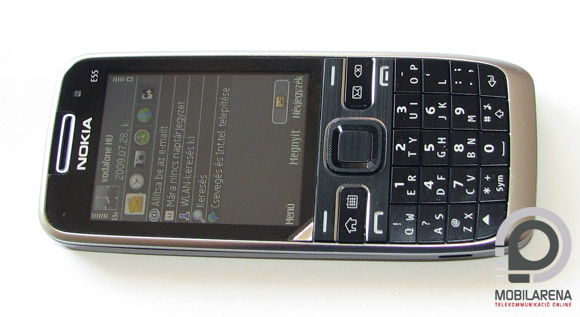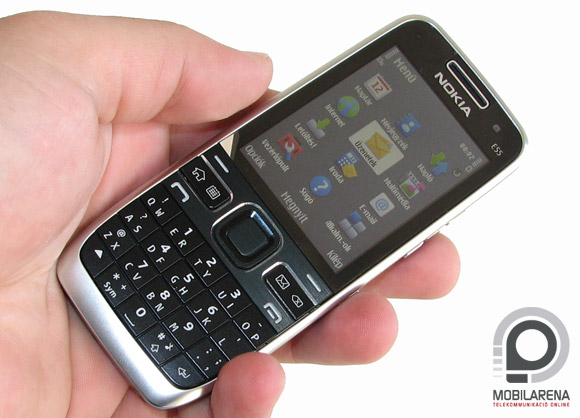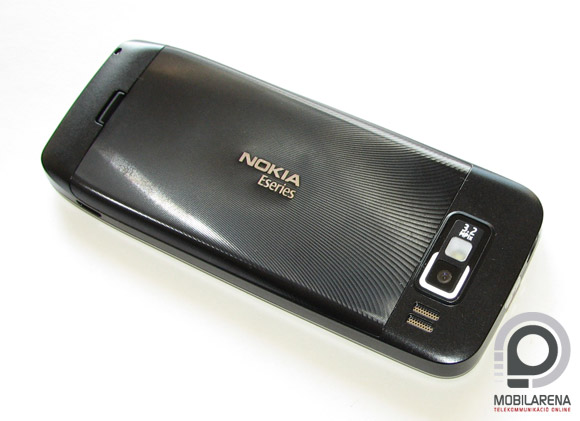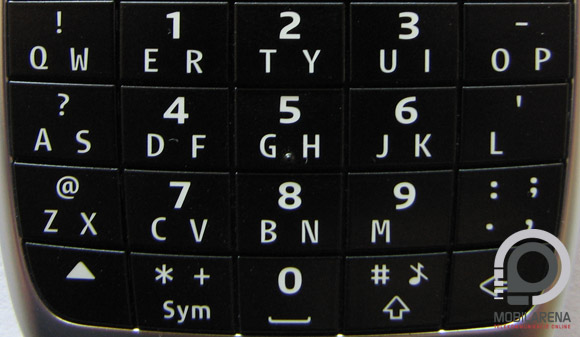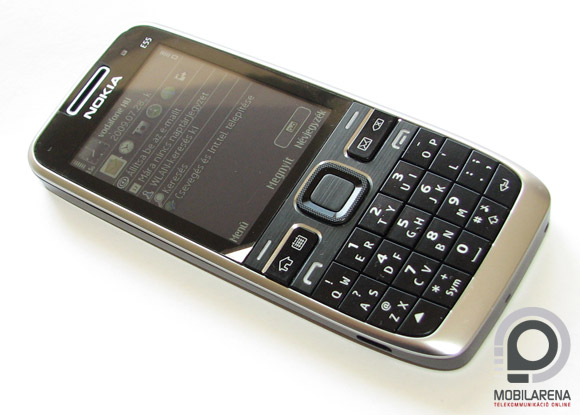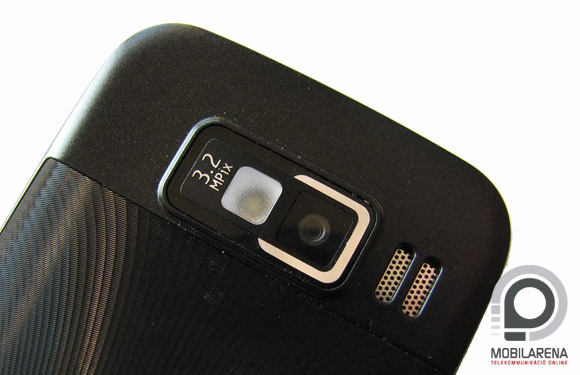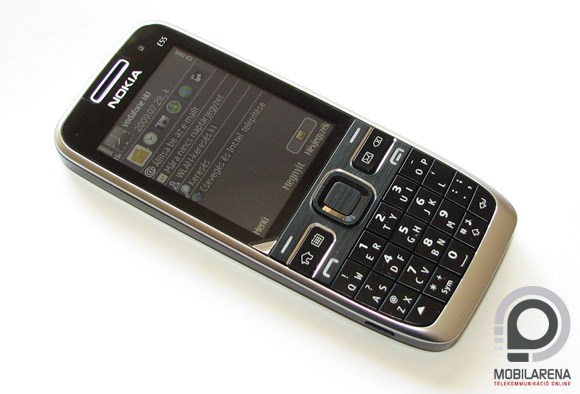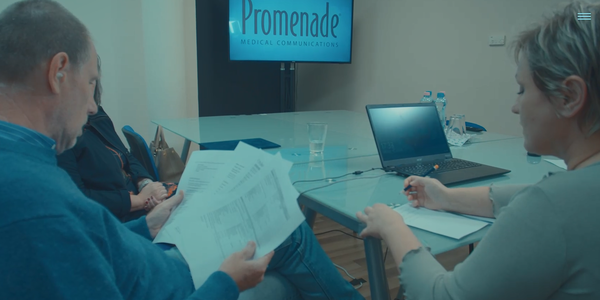Introduction
Manufacturers have been looking for an optimal control method on mobile phones since the first handheld devices have appeared, they would like to have something that can offer the highest typing speed on a relatively small surface. Of course the standard numeric keypad is still okay for basic tasks, but since we’re using our phone for messaging, web browsing and taking notes, this matter becomes an important one from time to time.
Lately – thanks to the evolution of technology – two trends have formed on devices that don’t have the classical keypad. The more conservative solution is the QWERTY keypad, which needs quite a lot of space, but if you have two free hands, this is surely the fastest way to type on a phone. All serious manufacturers have a couple of these phones, for example Nokia has E75 and N97, while we could mention Xperia X1 from the rivals, whereas the most experienced company is HTC, who have created a new best handset for this trend with Touch Pro2.

The other tendency is connected with the displays. If we already have a rather large surface on which we can draw anything we want, why can’t we have a cool virtual keyboard on it? Starting from iPhone and ranging to Samsung, LG and Nokia, we can find similar solutions everywhere, but this has the downside of not having any pressure point and the user can’t always be sure about pressing the virtual key for real. BlackBerry Storm brought a strange, but clever solution, even though the display panel that has a play of two millimeters didn’t really spread yet, and it might never do.
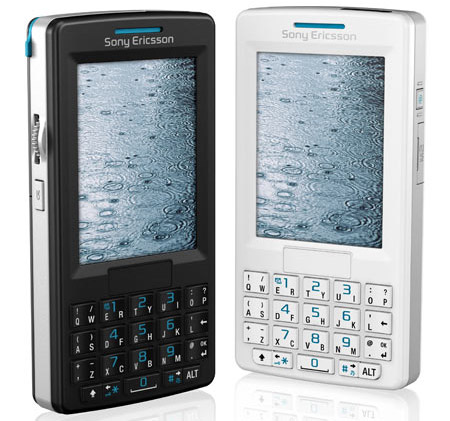
We received a Nokia E55 from XXL GSM with a strangely crammed up half-QWERTY keypad. This is nothing new, as we’ve seen a similar one on a BlackBerry (7100), and although some of you might remember the somewhat odd Sony Ericsson M600, that’s still not the same thing. That phone’s keys had separate left and right sides, while the subject of our review has keys with a single pressure point, even though they still have two characters on them.
The main question about E55 is of course the keypad. Can this solution really be a transition between the classical and QWERTY keyboards, both in terms of space and speed? How long will it take to get used to this layout, how annoying or comfortable is to use the phone this way? I’d like to put it forward that I am only of the lots of thousands of potential E55 users. My experiences might not be the same as those of customers who have spent a lot of money on E55 and will get used to this strange device even if that’s the last thing they do. They will have to fight with it, that’s sure.
Exterior
The box doesn’t have many extras inside. A basic headset, a microUSB charger, a data cable and a converter are all that’s inside the package, besides the phone of course. The converter can be applied on old Nokia chargers to make them microUSB-compatible, hooray. A leather case would have been better. Another thing that’s also an accessory is the 2 GB microSD card inside the phone.
The handset looks really attractive at first sight. Eseries has a mature style by now, with some attributes that make the phones easy to recognize. These include the icons on the keys around the navigation button, the silver frame, the bit flat bottom and the back panel that’s made of metal. The shape of the keys, the fonts, the part above the display all make it clear that we’re having a Nokia business phone in our hands.
The most special part of E55 is the keypad, so let’s have a closer look at it. As you can see it on the pictures, each key has two characters on it and one more above every third. These can be accessed by pressing the modifier key in the bottom left corner. The layout is in fact QWERTY, which is really strange at first, as the keypad’s size makes us automatically use it as a classical phone keypad. Of course one can get used to anything, but let’s talk about this later.
There is only a microUSB connector on the left side of the phone, but there are some controls on the right. The keys on the sides of the top trio are used for setting the volume, the one in the center launches the voice recorder. Below we can see the camera’s shoot key. On top of E55 we can see the power button, and there is a 3.5 mm jack besides it. The back panel is made of metal, it’s easy to take off, and there is a camera on top – on the part that stays on the phone of course.
Assembly quality is exceptional, the materials used are worthy of the Eseries’ renown high standards, E55 makes the impression of a very precisely assembled device.
Menu, hardware
I’m glad to announce that Nokia used the new, 600 MHz CPU in E55. This processor has proved itself in 5630 as well and did a good job, which didn’t change: the software is shockingly fast. Of course the QVGA display will soon be considered as a small one in the world of smartphones and the 2.4” diagonal is no big deal either, but this is still okay for business phones.

I might not surprise anyone saying that E55 has the Symbian OS with the Series 60 platform, version 3.2, and just like on many other Eseries phone, the whole thing is completed with the Home Screen. The point is that users can change modes as well, there is a business and a home mode, which are not environmental profiles, as they don’t only change ringtones, but reorganizes the icons and features on the standby screen (active desktop), according to our preset needs.
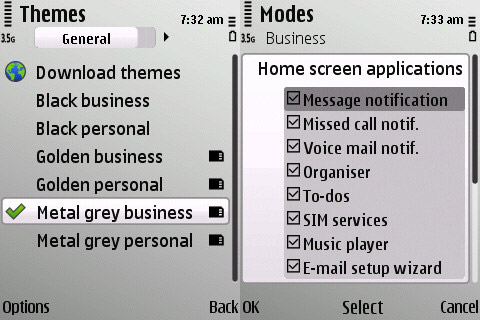
I might not even have to review the menu system, we can see the good old Symbian structure: colors can be changed with themes and there are logical icons everywhere. The designers have paid a lot of attention to avoid scrolling wherever it is possible, so all submenus fit on a single screen by default.

Still, the first software version is far from perfect. The phone I had locked up quite frequently and it usually did it in the middle of a conversation. Of course this could be because I have a really old SIM card, but unfortunately the handset hung up when installing the N-Gage platform. We should disable automatic screen rotating, as if we’d like to enter a menu and tilt the phone at the same time, the otherwise fast system slows down a lot.
I had problems with sound quality as well. Although I’ve heard everyone perfectly during the test period, many of my partners have been complaining about not hearing what I’m saying, my voice kept disappearing from time to time. This means no good for Nokia, opposed to the assembly quality, I can’t say much good about the software. These problems are of coursed fixed by a patch, but I think it’s a huge mistake to launch an Eseries phone in such a state.
Typing
It’s evident that the most interesting part of the phone is typing. This half-QWERTY solution is not very wide-spread on smartphones, so I could hardly wait to start getting used to it. Yeah, it really needs some time to get used to the layout. It’s a bit hard to change from a classical phone keypad, we keep hitting the keys as we used to and always forget that this is a QWERTY, so the letters are elsewhere.
Of course such a solution can work nicely if there is a refined prediction system in the background, and Nokia did all he could in order to make it work. Writing in English is rather easy, but we could be in trouble when using a different language, due to the different rules. Fortunately the words we type are automatically added to the dictionary and there is a word completion feature as well, this displays in a dim color the word the software thinks we want to type, so typing can speed up a lot.
If we choose to disable word prediction, it takes even more to get used to the keyboard. Two letters on a key, sometimes only one, it would take weeks to type at a normal speed. I know it’s not authoritative at all, but I did an experiment: I’ve tried to type an English sentence with prediction turned off on E55 and on a 2700 classic, and even after three days, it took at least twice as much to finish with the sentence on E55 than it took on the classical keypad. Let’s take a look at a short video about this:
Features
We shouldn’t expect any surprise at the basic features. The phonebook works just as good as it always did on the Symbian Series60 platform. Extra information entered to the contacts can satisfy anyone’s needs and voice dialing works best in English, although you can try it in other languages as well. We can only put contacts on the 60 MB onboard memory, so the capacity is practically infinite.
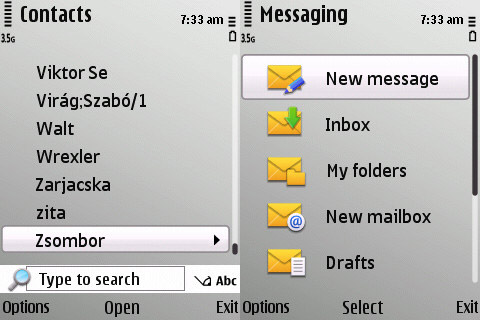
The messaging software is also refined, I might not even have to mention that besides SMS and MMS messages, we also have advanced email services as well, including Exchange server support. This has been present on every real Nokia smartphone since E75, and although it’s not the tip of perfection like BlackBerry, but it’s more than enough for average users and it’s even much cheaper.
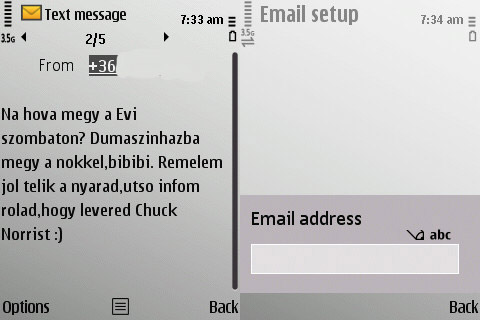
As for other applications, can see the good old calendar, an alarm clock with lots of options and the other obligatory functions are also here, including the stopwatch, the calculator and the world clock. Besides these it’s also great that we get the full version of the QuickOffice suite, so we can also edit and create new Office documents. The PDF reader and the mobile Zip app are also well-known. The Font Magnifier can be a great tool for the visually impaired.

E55 has a GPS receiver as well, I had no problems with its functionality, it won’t lose connection once it found the satellites. Of course we again have Nokia Maps for navigation (which hung up 10 out of 10 times on the phone), but we have to pay for turn-by-turn navigation as usual. There are lots of alternative free apps, but we could also recommend Garmin XT, which also costs, but it’s nice if we don’t like Nokia’s software for some reason. The GPS can be used for one more thing, as we can geo-tag our photos.
Multimedia
The camera on the back is a 3.2 megapixel unit and there is a weak LED trying to help us out in dark. There is no autofocus, we get a so-called full focus instead (other sources refer to it as enhanced fix focus), which can theoretically make sharp pictures without focusing. The only thing I’ve noticed at first was that the camera takes the picture as soon as I press the button and they look good on the display, so I could hardly wait to see them on a computer monitor.
They look terrible. No matter we get mostly the same settings like on a different Symbian phone with a better camera, it seems there’s no use tampering with it. Each and every picture is blurred, although I took most of them in bright sunlight. There is no trace of any focus, close objects are completely blurred, distant ones also. Where does it focus anyway? There are some test pictures below, go and see it for yourselves.
We get the usual music quality. The headset is no big deal, we can’t take it apart, but since E55 has a standard jack, we can use any headset we want. When on handsfree we get a decent quality thanks to the metal case and with the speaker on the back we managed to make the equalizer unnecessary in this case, as we just have to put the phone on a large surface for some more bass.
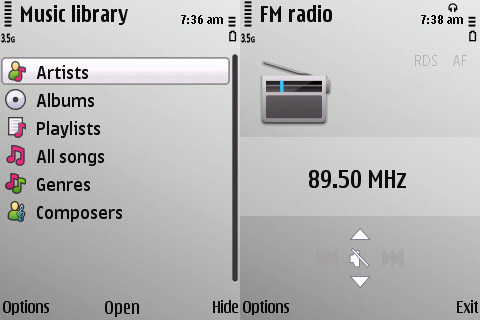
The software is also the usual, there are no real problems with it, the player can run in the background, we can filter tracks by ID3 tags and album covers can also be displayed. Of course stereo Bluetooth is supported and the FM radio is not missing either, but we have to connect a headset to use it.
N-Gage is supported (it’s only not working), which is not specific of all Eseries Nokia phones, and we have two preinstalled games as well, one of them is called Solitares (I think you all know what it is), while the second is Body Cascade, which is a rather cool Tetris-clone.
Data transfer, summary
The data transfer arsenal is full, we can even use HSDPA and HSUPA. WLAN support is also fully functional, the handset connected to my home router with no problem. The browser uses the well-known Minimap technology, which is one of the best browsers on non-handsfree phones. We also have MSN Messenger pre-installed, so we can really chat with our contacts everywhere, and it might be worth it, as we can get used to the key layout faster.

Locally we can use Bluetooth or the USB cable to connect to our computer. PC Suite had no problems handling the phone, the memory card was displayed as a mass storage device in Windows. This time I didn’t notice any problems, hooray.
The BP-4L was rather good, it has a performance of 1500 mAh, which is not weak and it’s a fact that E55 stayed online for three days, and I can’t say that about many handsets. Nokia proudly advertises that 80% of the phone can be recycled, which is probably important for eco-friendly customers.
Summary. E55 is a phone with serious features and functions on paper. I won’t think less of it because of the half-QWERTY, as this really depends on how fast can we get used to it, there will surely be people who can live with it. They have, however, used a really bad camera, the basic package doesn’t have many things inside and I just can’t avoid the software and sound quality issues. Such a phone affects the Eseries the most, as here we have another Nokia which is released with a beta software that hangs up, and this starts to be too much after the N97 problems.
People, don’t buy this yet. Let’s just wait a bit for a normal software, although that won’t do much with the camera and I’m afraid that microphone quality cannot be improved either. This means that – no matter how attractive the 600 MHz CPU is – I can’t give any award.
Bog
Translated by Szaszati
Nokia E55 has been provided by XXL GSM. The handset can be purchased at:
Budapest VI. Jókai tér 6.
Budapest VI. Teréz körút 18.
On-line at www.xxlgsm.hu.
Specifications
| Nokia E55 | ||
 |
General | |
| Technology | GSM, UMTS, HSDPA | |
| Size | 116.5 x 49 x 9.9 mm | |
| Weight | 95 grams | |
| Available colors | silver-black, silver-white | |
| Display | ||
| Display diagonal | 2.4” | |
| Display resolution | 240 x 320 pixels | |
| Display type | TFT | |
| Number of colors | 16.7 million | |
| Memory | ||
| Phonebook capacity | dynamic | |
| SMS memory / max. MMS size | dynamic / 300KB | |
| Internal memory | 40 MB | |
| Memory expandability | microSD (base package: 2GB) | |
| Data transfer | ||
| Frequency bands | 850/900/1800/1900 MHz | |
| GPRS / EDGE | Class 10 (4+1/3+2) / Class 10 (236.8 kbps) | |
| UMTS / HSDPA | yes (384 kbps) / yes (7,2 Mbps) | |
| IrDA / Bluetooth | yes / 2.0 (A2DP too) | |
| WiFi | yes | |
| USB | microUSB 2.0 | |
| Push-to-talk / RSS | yes / yes | |
| GPS receiver | yes | |
| Basic functions | ||
| Profiles | yes | |
| Vibra function | yes | |
| Built-in handsfree | yes | |
| Voice dialing / voice commands | yes / yes | |
| Sound recorder | yes | |
| Alarm clock | yes, also when turned off | |
| Predictive text entry | T9 | |
| Software | ||
| Platform | Symbian OS 9.2 Series 60 v3.2, Home Screen 1.0 | |
| WAP / HTML browser | yes / yes | |
| E-mail client | yes (POP3, IMAP4, Exchange, authenticated) | |
| Java | yes, MIDP 2.0 | |
| Games | N-gage + 2 | |
| Currency converter | yes | |
| Extra software | QuickOffice, Adobe PDF, Zip, Nokia Maps | |
| Multimedia | ||
| Main camera | 3.2 megapixels, fixed focus, flash | |
| Secondary camera | yes, VGA resolution | |
| Video recording | yes, VGA, 30fps | |
| Music player | yes, can run in background | |
| Equalizer | yes | |
| FM radio | yes - RDS | |
| Battery | ||
| Main battery | 1500 mAh Li-Ion | |
| Standby time | 552 hours | |
| Talk tine | 480 minutes | |
| Other | ||
| half-QWERTY keypad, motion sensor | ||

